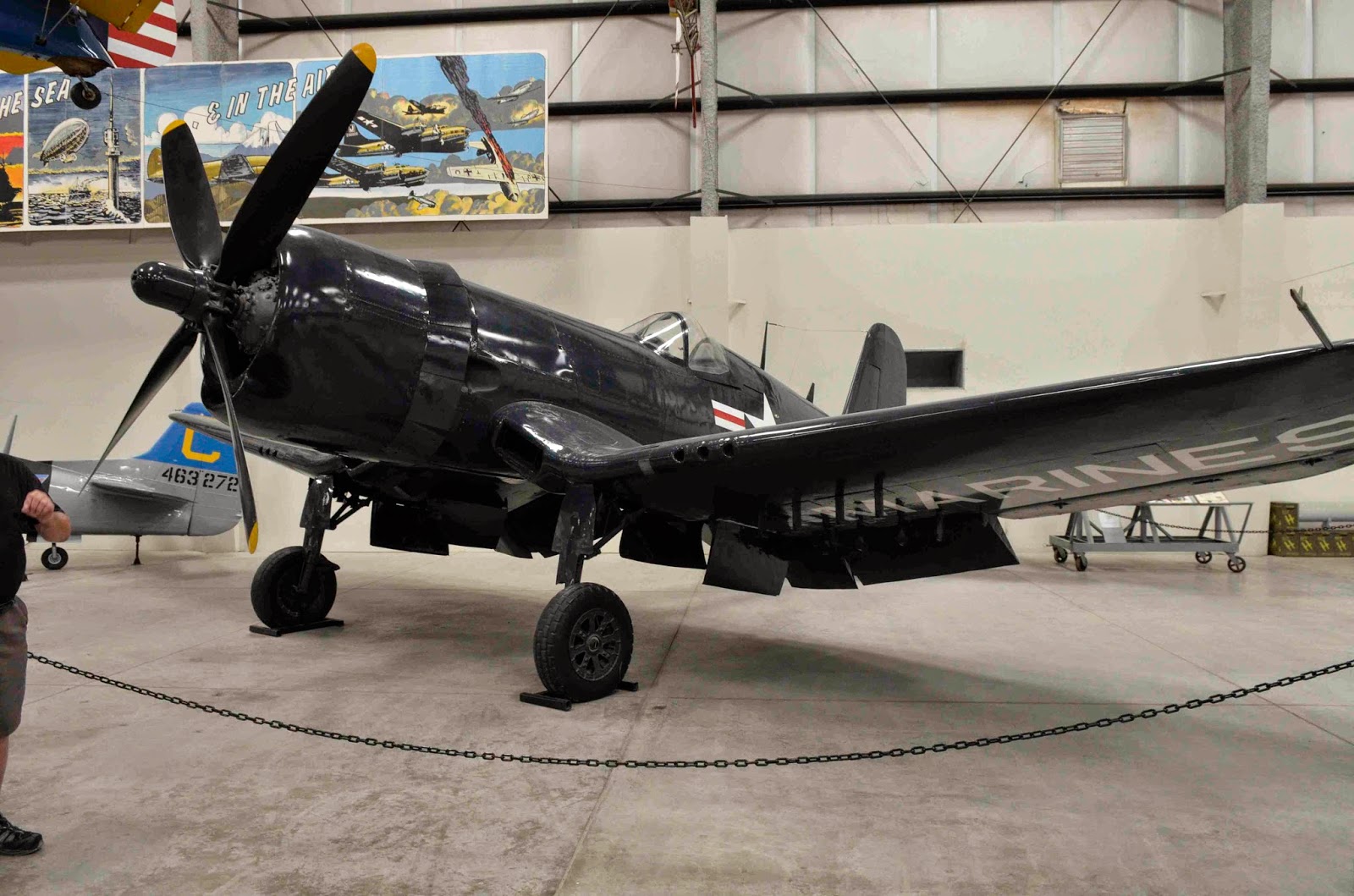The museum has excellent docents, most of whom flew some of the planes on display.
We entered beneath a Wright Brothers Flyer. Neil Armstrong took a piece of fabric and a small piece of wood from the Wright Bros. flyer on his moon landing.
A special section covers some of the women who were both military and civilian pilots.
Among the spy planes was this Blackbird SR 71A made of titanium to resist the high temperatures created by flying at Mach 3.
It actually expanded as it flew. The plane’s design was determined by engineers using slide rules since computers were not yet extensively used.
Desperate to get planes and pilots to the European Theater in WWII, the military started by adapting the planes already in existence. This 1935 DC3 had been modified to carry twenty-one passengers. The military strengthened it for cargo, making it a C42 Sky Train with black and white stripes for identification by US ground troops.
B24s rolled off the assembly line at the rate of about one an hour. Women were a major part of the assembly line. The plane was not pressurized so pilots so had to fly low. This type of plane was flown by Louis Zamperini as related in the book and movie Unbroken.
This symbol, Facis, was the emblem of the Italian Fascists.
The German V1 was the first “cruise missile.” As it flew toward a target, a small propeller on the nose spun counting rotations until it reached its London target as determined by German engineers. The propeller made a buzzing sound. When people on the ground heard it, they felt safe. When the couldn’t hear it, they knew the bomb was dropping. Eight thousand were killed by these bombs. This was an actual V1 that was captured at the end of the war.
After Pearl Harbor, with the Japanese in control of Pacific Islands, the military planned for bombers strike against the Japanese mainland. The attack was to be from an aircraft carrier and then proceed into China for assistance by Chiang Kai Chek’s army. Doolittle’s Raid was an example of the risks of doing this. His sixteen planes had to take off from further east and fly in daylight instead of the planned dark. Most of the squadron were killed or captured but the act of their flying excited Americans and raised the moral after having had our homeland attacked.
At the beginning of the war the Japanese had a better fighter than ours, the Nakajima Hayabusa “Oscar.”
The Curtiss C-46 was used to ferry troops and supplies over The Hump, the Himalaya Mountains from India to Asia. Legends say new pilots were told to follow the trail of downed planes around the towering mountain range.
The Corsair was the best Navy plane because of its wing design.
This P51 Mustang bears interesting kill symbols. Louis Curtiss, an Ace (five kills) pilot was a POW in Germany, after downing 5 German planes and one Italian. He escaped and was assigned to the Philippines. On a mission toward a Japanese-held island, his wingman was shot down and Curtiss knew what would happen to him if the Japanese caught him. Meanwhile a C47 headed right for the Japanese Island and Curtiss needed to stop it. He shot out one engine but they did not stop so he shot out the other. The crew bailed. As it got dark, he had to leave them but he returned the next day to rescue them all. His plane bears the flags of the planes he shot down, five German, one Italian, one Japanese and one American. He received the Distinguished Flying Cross of saving their lives.
We got on the tram for the Boneyard tour, accessible only by escort and ID. It opened in 1946 on the Davis/Monthon Air Base. The Boneyard has five functions: Restoration, overhaul, storage (3800 aircraft), reclamation (spare parts) and disposal (backhoe). The inventory of all the planes in the area is worth $35 billion.
The planes are coated with white spraylat to keep them cooler in this hot environment.
This humongous plane is a C5A Galaxy that can carry a cargo of 800,000 pounds. It is 120 feet long and has 28 wheels. It’s nose flips up and it kneels to load.
Aero Spacelines Super Guppy Cargo plane was designed to carry special cargo.
A special place of honor was given to two WWII aircraft. The first is the B29 which was the aircraft that dropped the atomic bomb ending the war against Japan. This one comes complete with its own 500 pound bomb in the bomb bay.
The second aircraft was the B17 which was responsible for bombing the German homeland. Thousands of missions were carried out by this plane which was equipped with the Norton bombsight, a highly secret device at the time.
Here is the waist gunners view.
Outside displays included the only remaining B36.
This one is for you Pete, the B52 together with its tail gun.


























No comments:
Post a Comment